The Florida Keys have long been a magnet for adventure seekers, beach bums, artists, and history lovers alike — and nowhere encapsulates this sun-drenched magic better than Key West. If your idea of a perfect vacation includes learning something new while enjoying ocean breezes and cold drinks, then you’re in for a treat. From 19th-century forts to literary landmarks, Key West is packed with historic treasures waiting to be explored.
And let’s be clear: this isn’t your average dusty-museum kind of history. This is vibrant, eccentric, rum-soaked, and unapologetically oddball storytelling brought to life in pastel colors and tropical flair. While you’re hopping between historic stops, you’ll also want to experience the island’s famously fresh seafood and perhaps even cast a fishing line of your own.
Step into the Past at Fort Zachary Taylor
Let’s start with a heavy hitter: Fort Zachary Taylor Historic State Park, a Civil War-era fort built in the mid-1800s. This fortress of red bricks once protected the southern coastline and played a key role in both the Civil War and Spanish-American War. Wander through its winding corridors, climb up the old walls, and take in panoramic views of the turquoise waters below. Then walk down to the beach for a swim or a quiet nap under the pines. It’s a blend of history and nature you won’t want to miss.
Ernest Hemingway Home & Museum
No trip to Key West would be complete without a visit to the Ernest Hemingway Home and Museum. The legendary writer lived and wrote here during the 1930s, and the Spanish colonial house remains nearly unchanged. You’ll meet dozens of six-toed cats (descendants of Hemingway’s own pets), wander through his lush gardens, and step inside the writing studio where he crafted some of his most famous works. Whether you’re a fan of literature or just enjoy a good story, the Hemingway House is a Key West icon.
Harry S. Truman’s Little White House
Presidential history lovers, take note: Harry S. Truman’s Little White House served as the winter getaway for America’s 33rd president. It’s now a museum where visitors can see the rooms exactly as they were when Truman came down to escape D.C. winters. The site also hosted Eisenhower, Kennedy, and even Bill Clinton. Guided tours reveal not just the political backdrop, but also the personal quirks of a president who played poker and walked the streets like a local.
A Taste of the Sea at Eaton Street
Between historic landmarks, you’ll definitely work up an appetite — and there’s no better place to refuel than Eaton Street Seafood Market. Housed in a lovingly preserved Art Deco building just steps from the Seaport, this local favorite serves up grilled lobster tails, golden crab cakes, and their signature Key West pink shrimp.
Grab a spot at one of the shaded outdoor tables and watch the world go by as you dig into the freshest catch in town. Eaton Street’s seafood is so good, you’ll want to bring some home with you. You can check out their selection of shrimp and have it shipped anywhere in the continental U.S. — a perfect way to extend your island flavor long after your trip ends.
Dive into Local Lore at the Key West Cemetery
Now, this may sound morbid, but trust us: the Key West Cemetery is a must-see. Established in 1847, it’s full of quirky epitaphs, unique architecture, and some true Conch history. Notable residents include sailors, cigar makers, and even a legendary Bahamian voodoo priestess. Don’t miss the famous gravestone that reads, “I told you I was sick.” This is history with a side of island humor.
Custom Fishing Adventures with Seize the Day Charters
Looking to experience Key West the way early settlers and seafarers once did? Get out on the water with Seize the Day Charters. Captain Russ offers personalized fishing trips for all experience levels — from calm inshore waters to deep-sea excursions. You’ll not only enjoy the thrill of the catch, but you’ll also learn about the maritime history of the Keys from a true local expert. Read more about Seize the Day Charters and plan a trip that’s equal parts adventure and education.
Visit the Custom House and Mel Fisher Museum
For those who like their history with a touch of treasure, don’t miss the Mel Fisher Maritime Museum. This fascinating spot tells the story of Fisher’s discovery of the Spanish galleon Nuestra Señora de Atocha, which sank in 1622. The museum is home to gold bars, antique navigational tools, and actual artifacts pulled from the depths of the ocean.
Nearby, the Custom House Museum — with its towering red brick façade — offers rotating exhibits on Key West’s art, politics, and quirky past. Stand on the balcony and imagine the arrival of cigar ships from Cuba and the bustling port town Key West once was.
Soak It All In
What makes Key West special is its layered identity — equal parts paradise, pirate port, presidential retreat, and artist’s muse. Around every corner is a plaque, a statue, or an old building with a story that seems stranger and more delightful than the last. It’s the kind of place where history isn’t just preserved — it’s celebrated with a wink and a margarita.
Whether you’re exploring forts, fishing the reef, or enjoying a fresh seafood meal in a historic building, Key West offers a one-of-a-kind blend of the old and the unforgettable. So pack your sunscreen and your curiosity — and prepare to fall in love with a city where the past is never too far behind. Don’t forget to check out TripAdvisor to save and compare your travel accommodations!
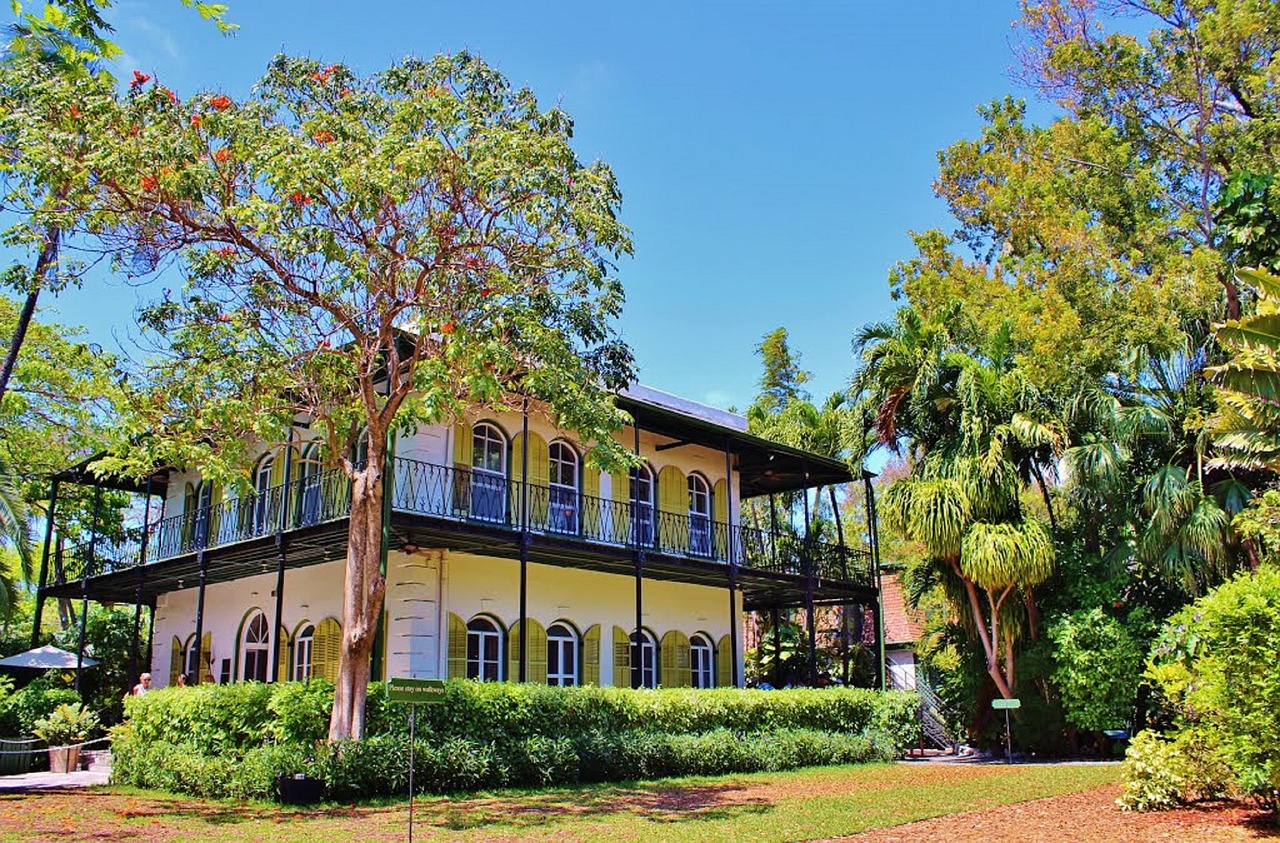
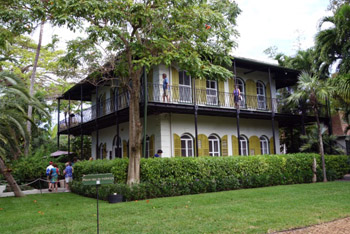
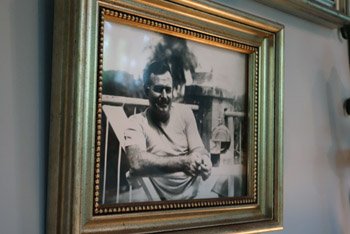 In 1928, Ernest Hemingway arrived at this tranquil island haven from Paris with his second wife, Pauline Pfeiffer, an accomplished journalist and contributor to Vogue Paris fashion magazine. The residence was a wedding gift from Pauline’s wealthy uncle Gus Pfeiffer, given to them in 1931.
In 1928, Ernest Hemingway arrived at this tranquil island haven from Paris with his second wife, Pauline Pfeiffer, an accomplished journalist and contributor to Vogue Paris fashion magazine. The residence was a wedding gift from Pauline’s wealthy uncle Gus Pfeiffer, given to them in 1931.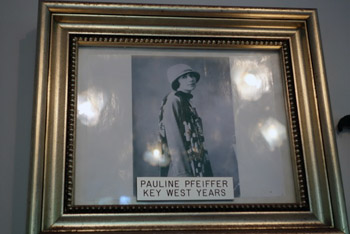 As I toured the house, you are immersed with Hemingway’s remarkable literary achievements. Each bedroom commemorates one of his great novels. The rooms are filled with personal mementos such as European hand carved antique furniture, life size trophy heads and animal skins from his African’s safaris and hunting trips from across the American west. He drew his inspiration for his boundless writings from many of these treasures.
As I toured the house, you are immersed with Hemingway’s remarkable literary achievements. Each bedroom commemorates one of his great novels. The rooms are filled with personal mementos such as European hand carved antique furniture, life size trophy heads and animal skins from his African’s safaris and hunting trips from across the American west. He drew his inspiration for his boundless writings from many of these treasures.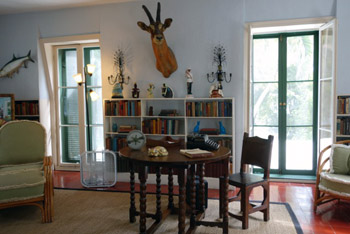 The most lavish feature of his residence is the 60 foot long, 24 foot wide, 10 foot deep in-ground aqua blue colored swimming pool, carved from the same solid coral bedrock which Key West Island sits upon. In the 1930’s, no one had a swimming pool, as there was no fresh running water on the island. Therefore, the 80,000-gallon lighted swimming pool had to be filled by drilling down to the salt-water table and pumping the water into the pool. Filling the pool took nearly three days and during the summer months, salt water would only stay fresh for a few days. As a result, each week the pool had to be drained, the pool surfaces cleaned of algae, and then refilled again.
The most lavish feature of his residence is the 60 foot long, 24 foot wide, 10 foot deep in-ground aqua blue colored swimming pool, carved from the same solid coral bedrock which Key West Island sits upon. In the 1930’s, no one had a swimming pool, as there was no fresh running water on the island. Therefore, the 80,000-gallon lighted swimming pool had to be filled by drilling down to the salt-water table and pumping the water into the pool. Filling the pool took nearly three days and during the summer months, salt water would only stay fresh for a few days. As a result, each week the pool had to be drained, the pool surfaces cleaned of algae, and then refilled again.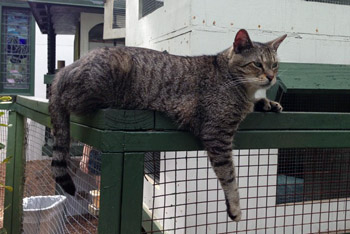 As I explored the residence grounds I came across several cats, all named after Hollywood stars from the 1930’s such as Humphrey Bogart and Ingrid Bergman. Hemingway’s household included a six-toed white cat named Snow White, which was given to him by a ship captain. Sailors considered these unique cats to be good luck, as they were very effective at catching vermin on board ships. Today, the only residences of The Hemingway Home and Museum are 47 polydactyl (six-toed) cats and it is believed that Snow White descendants live on the grounds today. Your average household cat has five front toes and four back toes. With the polydactyl gene in their DNA, that allows them to produce six-toed off spring.
As I explored the residence grounds I came across several cats, all named after Hollywood stars from the 1930’s such as Humphrey Bogart and Ingrid Bergman. Hemingway’s household included a six-toed white cat named Snow White, which was given to him by a ship captain. Sailors considered these unique cats to be good luck, as they were very effective at catching vermin on board ships. Today, the only residences of The Hemingway Home and Museum are 47 polydactyl (six-toed) cats and it is believed that Snow White descendants live on the grounds today. Your average household cat has five front toes and four back toes. With the polydactyl gene in their DNA, that allows them to produce six-toed off spring.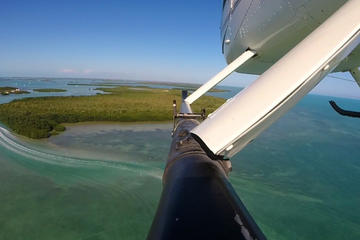
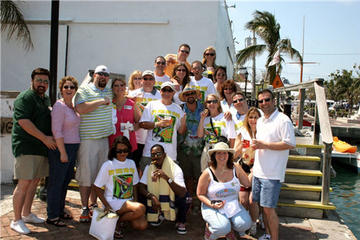
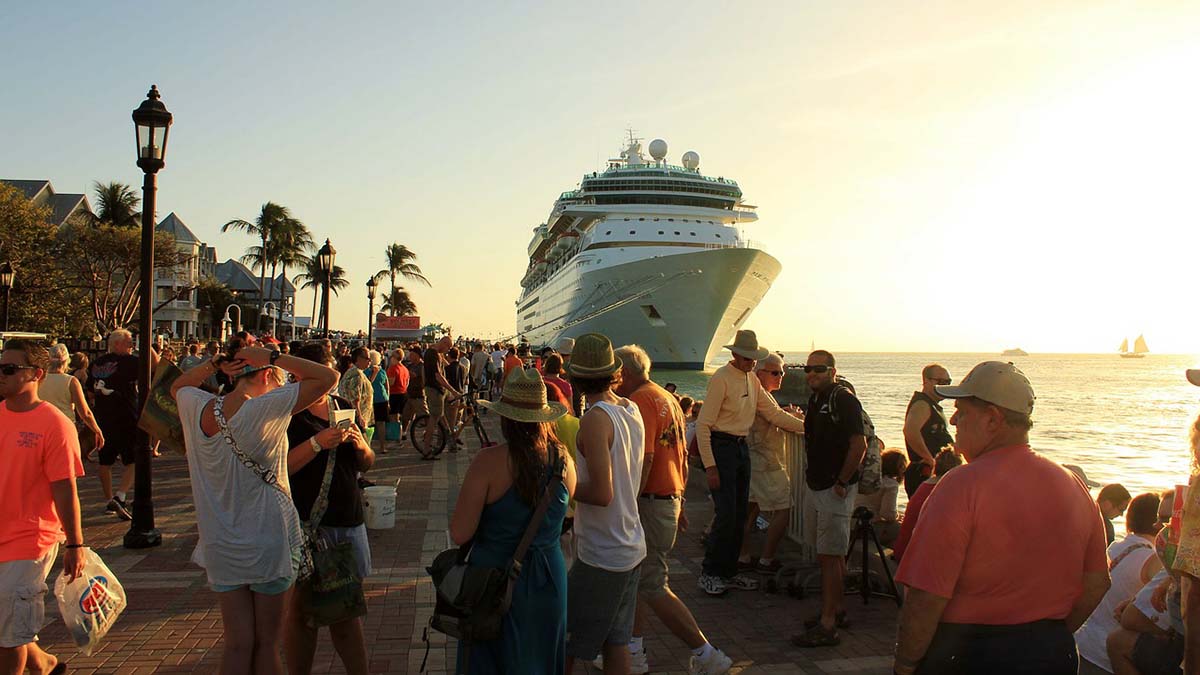
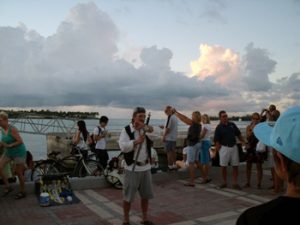
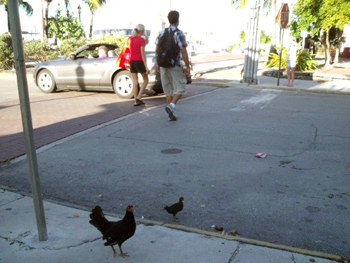 I soon found out while walking in Old Town that one doesn’t just share sidewalks with droves of locals and tourists wearing short shorts, but many other two-footed creatures who have ditched any clothes altogether: chickens. While these fowl have been around for almost two centuries, their numbers especially grew in the 1950s after Cubans fleeing Cuba brought them for use in cock fighting, food, and eggs. Their numbers multiplied over time after cock fighting was outlawed and grocery stores provided easier access to eggs and poultry. The roosters don’t just crow with the sunrise either as I found out at 230 a.m. in my hotel room. Nonetheless, there’s what seems to be an uneasy tolerance for the chickens’ presence here because they do feast on pesky insects, even though they have irritated many locals because of where they choose to poop, trespass, etc. This has resulted in various plans and schemes to deal with them over the years in what’s been called the “Great Key West Chicken Controversy” or “Key West Chicken Wars.”
I soon found out while walking in Old Town that one doesn’t just share sidewalks with droves of locals and tourists wearing short shorts, but many other two-footed creatures who have ditched any clothes altogether: chickens. While these fowl have been around for almost two centuries, their numbers especially grew in the 1950s after Cubans fleeing Cuba brought them for use in cock fighting, food, and eggs. Their numbers multiplied over time after cock fighting was outlawed and grocery stores provided easier access to eggs and poultry. The roosters don’t just crow with the sunrise either as I found out at 230 a.m. in my hotel room. Nonetheless, there’s what seems to be an uneasy tolerance for the chickens’ presence here because they do feast on pesky insects, even though they have irritated many locals because of where they choose to poop, trespass, etc. This has resulted in various plans and schemes to deal with them over the years in what’s been called the “Great Key West Chicken Controversy” or “Key West Chicken Wars.”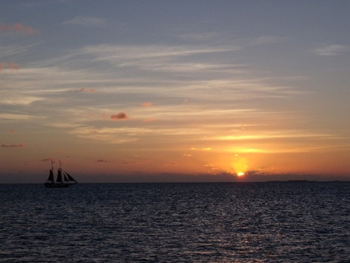 A setting sun has this ability to captivate the eyes of its admirers. I’ve seen beautiful sunsets in Wyoming, but I must say that the two I saw in Key West really gripped me so unexpectedly, for I never imagined sunsets being that impacting. I first watched one from the brick walkway of Mallory Square, which overlooks the Gulf of Mexico, and the other while on a sunset cruise.
A setting sun has this ability to captivate the eyes of its admirers. I’ve seen beautiful sunsets in Wyoming, but I must say that the two I saw in Key West really gripped me so unexpectedly, for I never imagined sunsets being that impacting. I first watched one from the brick walkway of Mallory Square, which overlooks the Gulf of Mexico, and the other while on a sunset cruise.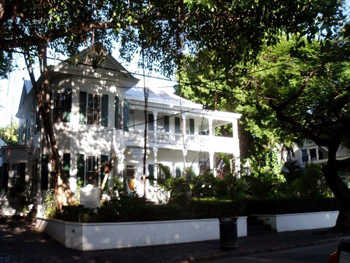 I strongly advise travelers in Key West to get off the beaten path from the touristy Duvall Street, and walk through the surrounding residential neighborhoods of Old Town. It’s here where I found a respite from the hustle and bustle of traffic while getting a glimpse into a unique kind of architecture called Conch Architecture. This style compliments the various plantlife in the area like hibiscus, fiscus, gumbo limbo, and frangipani. Earlier settlers of Key West used lime made from burned Conch shells to help build their homes, which became known as “Conch Houses”, a name which would stick even as wood became the prime building material.
I strongly advise travelers in Key West to get off the beaten path from the touristy Duvall Street, and walk through the surrounding residential neighborhoods of Old Town. It’s here where I found a respite from the hustle and bustle of traffic while getting a glimpse into a unique kind of architecture called Conch Architecture. This style compliments the various plantlife in the area like hibiscus, fiscus, gumbo limbo, and frangipani. Earlier settlers of Key West used lime made from burned Conch shells to help build their homes, which became known as “Conch Houses”, a name which would stick even as wood became the prime building material.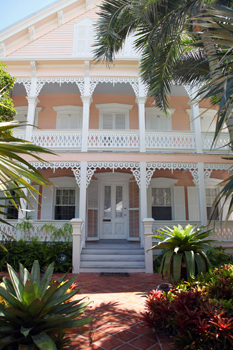 These homes implement different styles, influenced by New England, Gulf Coast, Bahamian, and African influences. To my eyes, they greatly reminded me of the old plantation homes still found in the “Deep South” such as seen in such movies like Gone with the Wind. They are built to help withstand the tropical climate. I especially noticed the sloping roofs, which help reflect the sun better and sent water down to the gutters more efficiently.
These homes implement different styles, influenced by New England, Gulf Coast, Bahamian, and African influences. To my eyes, they greatly reminded me of the old plantation homes still found in the “Deep South” such as seen in such movies like Gone with the Wind. They are built to help withstand the tropical climate. I especially noticed the sloping roofs, which help reflect the sun better and sent water down to the gutters more efficiently.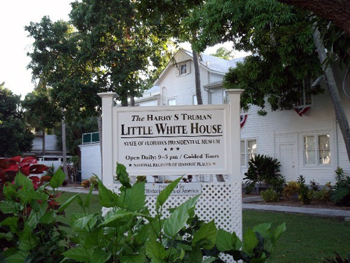 As a U.S. presidential history buff, I was pleasantly surprised to find that I could easily visit a place where numerous Presidents of the United States stayed and performed their duties, most notably Harry S. Truman. He lived and worked at “The Little White House” for 175 days via 11 working vacations from 1946-1952. Even on “vacation” here, he still had to sign his name 200-600 times a day to help keep the country running in a place originally built for the US Navy’s base commander and paymaster in 1890. Unlike the other White House farther north, I didn’t have to make any special arrangements or go through any other fuss to walk around a property containing the 8,700 square foot house and nicely-manicured lawn and gardens. It’s in the midst of a quiet neighborhood, a short walk away from Duvall Street. I can see why our past leaders must’ve found the property to be a respite just as I did from the boisterous tourist crowds.
As a U.S. presidential history buff, I was pleasantly surprised to find that I could easily visit a place where numerous Presidents of the United States stayed and performed their duties, most notably Harry S. Truman. He lived and worked at “The Little White House” for 175 days via 11 working vacations from 1946-1952. Even on “vacation” here, he still had to sign his name 200-600 times a day to help keep the country running in a place originally built for the US Navy’s base commander and paymaster in 1890. Unlike the other White House farther north, I didn’t have to make any special arrangements or go through any other fuss to walk around a property containing the 8,700 square foot house and nicely-manicured lawn and gardens. It’s in the midst of a quiet neighborhood, a short walk away from Duvall Street. I can see why our past leaders must’ve found the property to be a respite just as I did from the boisterous tourist crowds.